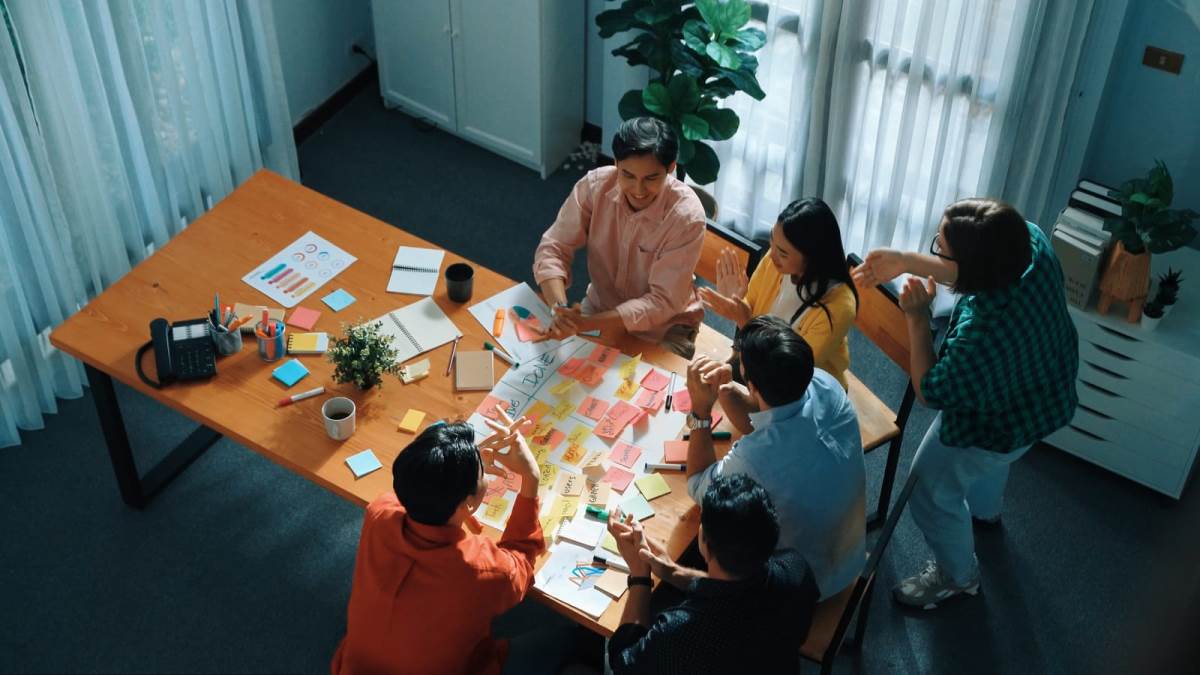Leadership training is an essential investment for organizations aiming to cultivate effective leaders. While full-day workshops and extensive programs are valuable, short, focused activities can be equally impactful. They provide a practical way to develop key leadership skills like communication, decision-making, and team-building in a time-efficient manner. This article explores two short yet powerful leadership training activities designed to enhance leadership capabilities in under an hour.
Activity 1: The Leadership Compass Exercise
Objective:
This activity helps participants identify their leadership style and understand how different styles complement one another. It emphasizes self-awareness, adaptability, and collaboration.
Duration:
30 minutes
Materials Needed:
- Leadership Compass worksheet (or printed descriptions of compass points)
- Flip chart or whiteboard
- Markers
Setup:
- Assign each wall of the room a compass point (North, South, East, West).
- Provide descriptions of each compass point representing a leadership style:
- North: Action-oriented, decisive, and goal-driven.
- South: Supportive, empathetic, and people-focused.
- East: Visionary, creative, and big-picture thinker.
- West: Analytical, detail-oriented, and systematic.
Instructions:
- Self-Assessment: Ask participants to read through the descriptions and reflect on which compass point best represents their leadership style. Encourage them to consider how they usually approach leadership tasks, problem-solving, and team interactions.
- Group Division: Have participants move to the corner of the room that corresponds to their selected compass point. If a participant feels equally drawn to multiple points, they can stand between them.
- Group Discussion: Within their groups, participants discuss the following questions:
- What strengths do leaders with this style bring to a team?
- What challenges or blind spots might they face?
- How can they work effectively with leaders of other styles?
- Cross-Group Insights: Reconvene as a full group. Each compass point presents its insights, focusing on how their style contributes to leadership and how they prefer to be approached by others.
- Reflection: Discuss how recognizing diverse leadership styles can improve team dynamics, decision-making, and overall performance.
Key Takeaways:
- Leadership is multifaceted, and no single style is superior.
- Understanding and leveraging diverse styles strengthens teams.
- Self-awareness fosters adaptability and better communication.
Activity 2: The Marshmallow Challenge
Objective:
This fun, hands-on activity develops teamwork, creativity, and problem-solving skills—all critical aspects of effective leadership.
Duration:
45 minutes
Materials Needed:
- 20 sticks of uncooked spaghetti (per team)
- 1 yard of string (per team)
- 1 yard of masking tape (per team)
- 1 marshmallow (per team)
- Stopwatch or timer
- Measuring tape
Setup:
- Divide participants into teams of 3–5 people.
- Provide each team with an identical set of materials.
Instructions:
- Introduction: Explain the challenge: Teams must build the tallest free-standing structure possible using only the materials provided. The marshmallow must be on top of the structure.
- Rules:
- The marshmallow must remain whole and not be cut or eaten.
- Teams can use as much or as little of the materials as they wish.
- The structure must stand on its own without any support for at least 10 seconds.
- Building Phase: Give teams 18 minutes to plan, design, and construct their structures. Encourage them to collaborate and strategize effectively.
- Final Measurement: At the end of the time limit, measure the height of each structure. Announce the winner and celebrate their achievement.
- Debrief and Discussion: Lead a group discussion to reflect on the activity:
- What strategies worked well? What didn’t?
- How did the team handle challenges or setbacks?
- What role did leadership play in the success of the team?
- How does this activity relate to real-world leadership scenarios?
Key Takeaways:
- Effective leadership involves clear communication, adaptability, and fostering collaboration.
- Failure is a valuable part of the learning process and innovation.
- Teams benefit from balancing planning with action.
Activity 3: The Blindfold Challenge
Objective:
This activity enhances trust, communication, and the ability to delegate effectively—skills crucial for leadership.
Duration:
30–40 minutes
Materials Needed:
- Blindfolds (one per participant or as needed)
- Obstacles or simple items (cones, chairs, ropes, or boxes) to create a safe “obstacle course”
- Open space to conduct the activity
Setup:
- Arrange a simple obstacle course that participants can navigate safely with guidance.
- Divide participants into pairs.
Instructions:
- Role Assignment: In each pair, one participant is blindfolded and will navigate the course. The other will act as the guide, giving verbal instructions.
- Navigation: The guide must lead the blindfolded partner through the course without touching them. The instructions must be clear, concise, and actionable.
- Switch Roles: Once the first participant completes the course, switch roles and repeat.
- Group Debrief: After all pairs have completed the course, gather as a group to discuss:
- How did it feel to lead without physical guidance?
- How did it feel to trust someone completely for navigation?
- What strategies improved communication and trust?
Key Takeaways:
- Leaders must build trust and communicate clearly, even in challenging situations.
- Delegation and guidance require precision and empathy.
- Teams succeed when trust and collaboration are strong.
Activity 4: The “What’s on Your Plate?” Exercise
Objective:
This activity teaches prioritization, delegation, and time management—key leadership skills for handling multiple responsibilities effectively.
Duration:
30 minutes
Materials Needed:
- Index cards or sticky notes
- Pens or markers
- A large board or wall space for grouping tasks
Setup:
- Distribute 5–7 index cards or sticky notes to each participant.
- Prepare a wall or board with sections labeled as Urgent, Important, Delegate, and Eliminate.
Instructions:
- Task Identification: Ask participants to list 5–7 tasks they handle in their role or a leadership position. These tasks can be specific work responsibilities or broader leadership challenges.
- Categorization: Participants place their tasks in one of the four categories:
- Urgent: Tasks that require immediate attention.
- Important: Tasks that are crucial but not time-sensitive.
- Delegate: Tasks that can be assigned to others.
- Eliminate: Tasks that add little value and should be discontinued.
- Group Discussion: Facilitate a discussion about why certain tasks were placed in each category. Encourage participants to reflect on:
- How they currently manage their responsibilities.
- How prioritizing and delegating can improve their leadership effectiveness.
- Action Planning: Ask participants to create an action plan to manage their responsibilities more effectively, focusing on eliminating unnecessary tasks and delegating where appropriate.
Key Takeaways:
- Effective leaders prioritize tasks based on impact and urgency.
- Delegation is a vital skill that allows leaders to focus on high-value activities.
- Eliminating low-value tasks creates more time for strategic thinking.
Activity 5: The Decision-Making Challenge
Objective:
This activity focuses on critical thinking, collaboration, and decision-making skills under pressure, helping leaders navigate complex scenarios.
Duration:
45 minutes
Materials Needed:
- Scenario cards with decision-making challenges (one per group)
- Flip chart or whiteboard
- Markers
Setup:
- Divide participants into small groups of 4–6 members.
- Provide each group with a scenario card detailing a leadership dilemma.
Instructions:
- Scenario Presentation: Each group receives a card describing a challenging leadership scenario. For example:
- Scenario 1: A critical project is behind schedule. The team is overworked, and resources are limited. How do you address the situation?
- Scenario 2: Two team members have an ongoing conflict that affects productivity. How will you resolve it?
- Discussion and Solution Development: Groups discuss the scenario and brainstorm solutions. Encourage them to:
- Analyze the problem thoroughly.
- Consider the perspectives of all stakeholders.
- Develop a step-by-step action plan.
- Presentation: Each group presents their solution to the larger group, explaining their reasoning and decision-making process.
- Debrief: Discuss as a group:
- How did the group approach the problem?
- What leadership qualities were evident during the activity?
- What challenges did they face in reaching a consensus?
Key Takeaways:
- Effective leaders analyze problems, consider multiple perspectives, and make informed decisions.
- Collaboration and clear communication are essential for solving complex issues.
- Leadership often involves balancing competing priorities.
Activity 6: Building the Ideal Leader
Objective:
This creative activity encourages participants to define and visualize the qualities of an effective leader, fostering self-reflection and team alignment.
Duration:
30 minutes
Materials Needed:
- Large sheets of paper or flip charts
- Markers, colored pens, and sticky notes
Setup:
- Arrange participants into teams of 4–6 members.
- Provide each team with materials to create a visual representation of their “ideal leader.”
Instructions:
- Brainstorming: Teams brainstorm the qualities, skills, and traits that make an ideal leader. Encourage them to think about:
- Personal attributes (e.g., empathy, resilience).
- Leadership skills (e.g., strategic thinking, conflict resolution).
- Behavioral habits (e.g., active listening, decisive action).
- Visualization: Teams create a visual representation of their ideal leader, such as a drawing, diagram, or collage. They can use words, symbols, or images to depict traits and skills.
- Presentation: Each team presents their “ideal leader” to the group, explaining their choices and how these traits contribute to effective leadership.
- Reflection: Facilitate a group discussion:
- How does the “ideal leader” align with their own leadership aspirations?
- Which traits do they already embody, and which require development?
- How can they apply this vision to their leadership roles?
Key Takeaways:
- Leaders can identify areas for personal growth by reflecting on the traits of an ideal leader.
- Teams benefit from shared understanding and alignment on leadership values.
- Visualizing leadership fosters creativity and deeper engagement with the concept.
Why These Activities Work
- The Decision-Making Challenge:
- Simulates real-world leadership dilemmas, encouraging participants to think critically and collaboratively.
- Reinforces the importance of structured problem-solving and team input.
- Building the Ideal Leader:
- Encourages participants to reflect on leadership qualities and set personal development goals.
- Creates a collaborative environment for discussing leadership values.
Tips for Success
- Adapt Scenarios: Ensure decision-making challenges are relevant to your participants’ roles or industries.
- Foster Open Discussion: Encourage participants to share ideas and respect diverse perspectives during brainstorming and debrief sessions.
- Link to Real-Life Leadership: After each activity, discuss how the lessons apply to everyday leadership situations.
By incorporating these activities into your training program, you provide opportunities for hands-on learning, self-reflection, and team-building, enabling participants to grow as effective and empowered leaders.
Examples
Example for the Leadership Compass Exercise
During a leadership workshop, participants were divided into groups based on their selected compass points. One group, representing the “North” leadership style, highlighted their decisiveness and action-oriented mindset. However, they acknowledged a tendency to overlook long-term strategies. The “East” group complemented this by focusing on vision and innovation. Through cross-group discussions, the participants realized how combining the strengths of both styles could create a balanced leadership approach that drives immediate results while planning for future success.
Example for the Marshmallow Challenge
A corporate team-building session used the Marshmallow Challenge to identify leadership dynamics. Initially, one team struggled due to poor communication, with everyone working on separate ideas. After realizing the need for collaboration, they assigned specific roles: one person focused on structure, another on stability, and a third on marshmallow placement. By the end of the session, the team built a stable structure and learned the importance of aligning individual efforts toward a shared goal—a lesson they applied successfully in their next project at work.
Example for the Blindfold Challenge
In a retail company’s leadership training program, participants paired up for the Blindfold Challenge. One blindfolded participant navigated an obstacle course with the help of their partner’s instructions. Initially, the guide struggled to give clear directions, leading to confusion. After regrouping and adjusting their communication approach—using simple, specific phrases—the blindfolded participant completed the course efficiently. The exercise highlighted the value of clarity and empathy in leadership, which participants later applied when delegating tasks to their teams.
Example for the “What’s on Your Plate?” Exercise
A group of managers from a tech startup used this activity to assess their workloads. One manager realized they were handling too many urgent but low-priority tasks, such as scheduling meetings and troubleshooting minor issues. By categorizing these tasks as “Delegate,” they developed a plan to assign them to an assistant, freeing up time for strategic planning. This shift improved their productivity and focus on the company’s long-term goals.
Conclusion
Leadership training doesn’t have to be a lengthy or overwhelming process. Short, focused activities like those outlined in this article can provide powerful learning experiences in minimal time. These exercises are designed to enhance core leadership skills, including communication, decision-making, trust-building, and strategic thinking.
By participating in activities like the Leadership Compass Exercise, individuals gain deeper self-awareness and a better understanding of how diverse leadership styles contribute to team success. Similarly, hands-on challenges like the Marshmallow Challenge and Decision-Making Challenge encourage creative problem-solving and collaboration under pressure. Exercises like the Blindfold Challenge foster trust and communication, while the What’s on Your Plate? and Building the Ideal Leader activities emphasize prioritization and self-reflection.
These activities not only help participants develop their leadership potential but also strengthen team dynamics. Whether used in workshops, team meetings, or retreats, these exercises are practical tools to inspire growth and empower leaders at all levels.




















